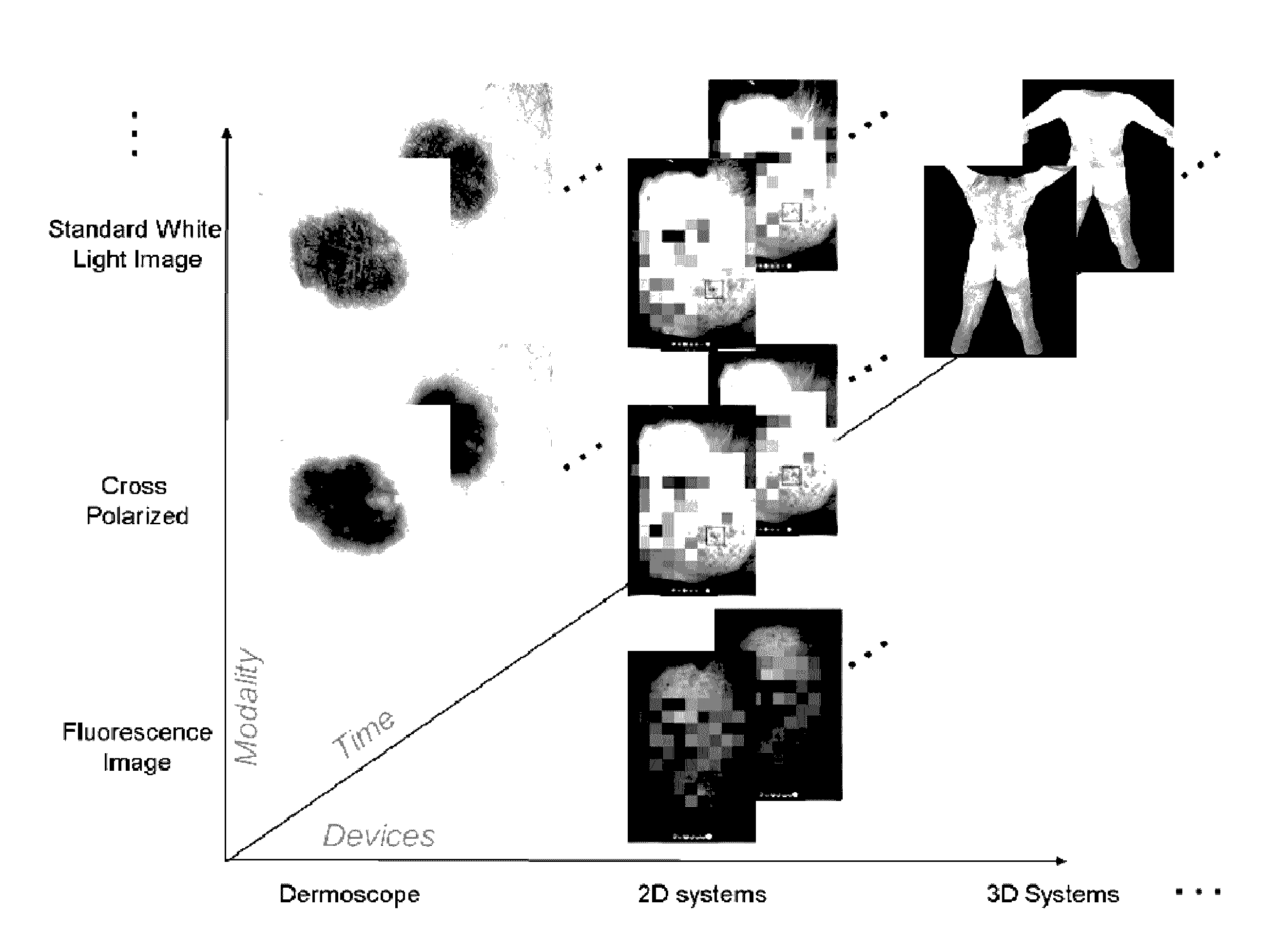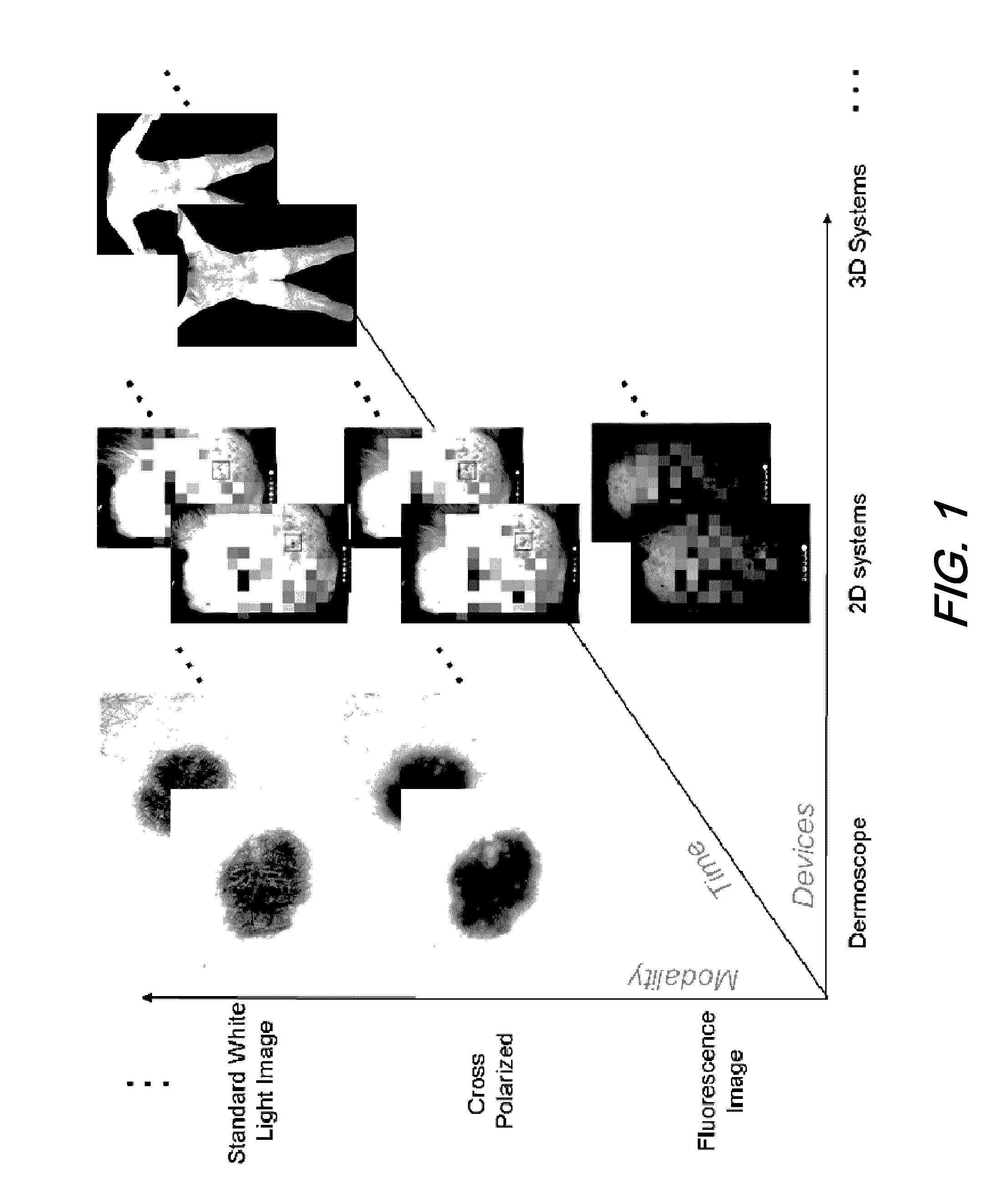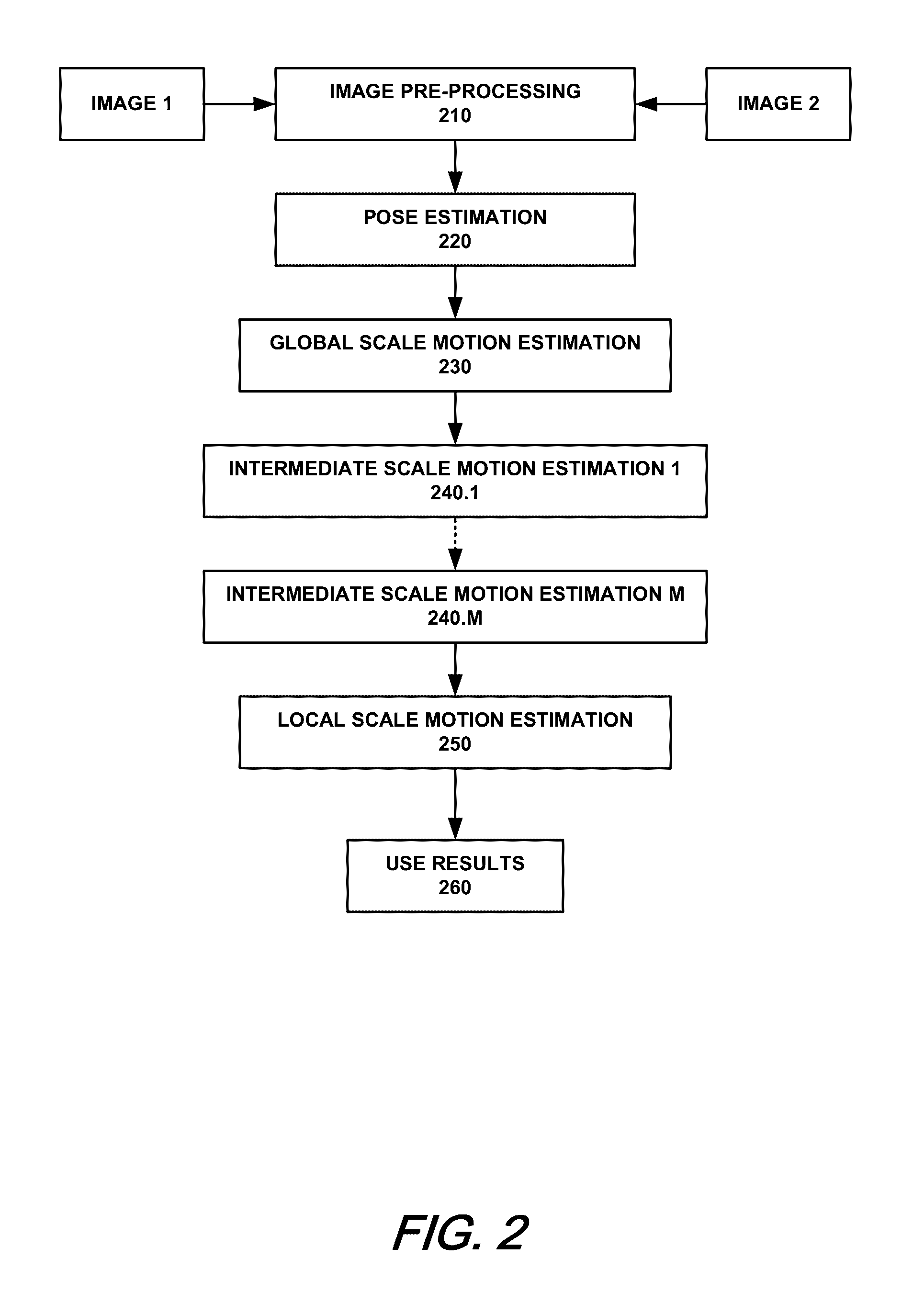Dermatological feature tracking over multiple images
a technology of image and facial features, applied in the field of dermatology, can solve problems such as extremely difficult and tedious processes
- Summary
- Abstract
- Description
- Claims
- Application Information
AI Technical Summary
Benefits of technology
Problems solved by technology
Method used
Image
Examples
case 1
[0074] the imaging modality changes between the input images while the timepoint and the type of device used remain the same.[0075]A. A doctor uses a 2D capture system (e.g., Canfield Scientific Inc.'s VISTA) to capture multiple images of a subject using different lighting modalities. However, changes in facial expression, subject's breathing, etc., will result in small deformations between any two successive captures. In this case, it may be necessary to compensate for the observed motion to identify collocated pixels across the different imaging modalities.[0076]B. The doctor uses a dermatoscope to capture a cross-polarized image and a standard white light image of a skin lesion. However, the motion between the two images might have to be compensated to account for the subject's movement and / or the doctor's motion when placing the dermatoscope on the subject.
case 2
[0077] the type of device and the imaging modality change while the timepoint remains the same.[0078]A. The doctor captures a 3D image of a subject using a whole body system. During the same visit, the doctor also uses a dermatoscope to capture cross-polarized images of lesions on the subject. The lesions captured with the dermatoscope are compared with the lesions detected in the 3D model, and automatically aligned and tagged with the lesions on the 3D model that provide for the best possible match (auto-tagging).[0079]B. The doctor captures a fluorescence image of a skin lesion using a 2D capture system (e.g., Canfield Scientific Inc.'s VISTA) and follows it with a localized cross-polarized image using a dermatoscope. Due to differences in scale and the spatial positioning of the two devices, an auto-tagging and alignment process between the two images can be advantageously performed.
case 3
[0080] the imaging modality and timepoint change while the device remains the same.[0081]The doctor uses a 2D capture system (e.g., Canfield Scientific Inc.'s VISTA) to capture multiple images of a subject using different lighting modalities (e.g., standard white light, cross-polarized, parallel-polarized, fluorescence, etc.) and over multiple visits. A challenge here is to compensate for large appearance changes (like skin tone variations due to changes in lifestyle) in addition to the small scale movements that occur between two intra-modality captures. In this case, it may be necessary to independently compensate the motion across time, and this result combined with the intra-modality motion to quantify the overall motion across modality and time.
PUM
 Login to View More
Login to View More Abstract
Description
Claims
Application Information
 Login to View More
Login to View More - R&D
- Intellectual Property
- Life Sciences
- Materials
- Tech Scout
- Unparalleled Data Quality
- Higher Quality Content
- 60% Fewer Hallucinations
Browse by: Latest US Patents, China's latest patents, Technical Efficacy Thesaurus, Application Domain, Technology Topic, Popular Technical Reports.
© 2025 PatSnap. All rights reserved.Legal|Privacy policy|Modern Slavery Act Transparency Statement|Sitemap|About US| Contact US: help@patsnap.com



